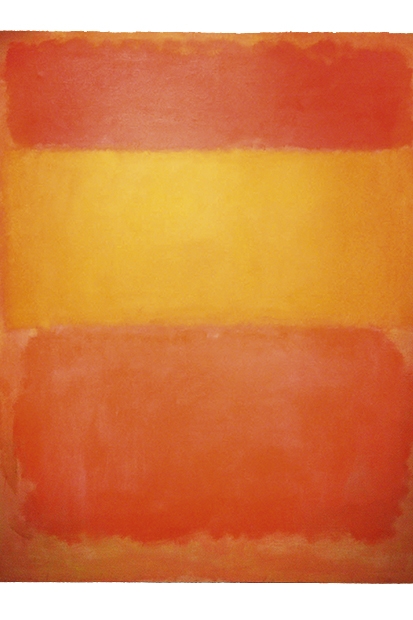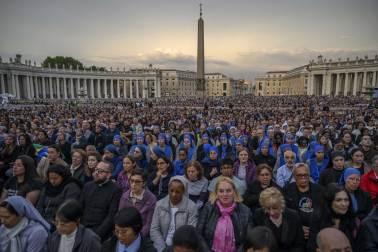One of the curiosities of western art is that, until the 20th century, few visual artists were of Jewish ancestry. With odd exceptions such as the Pissarros and Simeon Solomon, the culture tended to produce verbal rather than visual imaginations. With the 20th century that changed. The important group of abstract expressionists that came out of New York after the second world war centred on at least two Jewish artists — Barnett Newman and Mark Rothko.
Both possessed a specifically Jewish imagination, and both narrowed down their pictorial language to forms that expressed mystical aspects of their ancestral culture and faith. In Newman’s case it was the ‘zip’, a thin vertical stripe in a colour field connecting Earth and Heaven. In Rothko’s work, after a long period exploring figurative, surrealist and mythical imagery, it was made up of horizontal colour fields floating and dissolving, placed above each other in unpredictable and absorbing proportions.
Quite why Jewish artists emerged at this point and not earlier is an interesting question, addressed to some extent in Annie Cohen-Solal’s new volume in Yale’s ‘Jewish Lives’ series. Many people have discerned a strain of mysticism in Rothko’s mature works — the American abstract expressionist Clyfford Still described him as ‘thoroughly immersed in Jewish culture’. Cohen-Solal is able to be quite specific about this, claiming that individual parts of Rothko’s Seagram murals ‘may recall letters of the Hebrew alphabet: gimel, samekh and mem sophit’. If that is the case, it would explain why a painter of this sort could most easily emerge from minimalist abstraction.
Another explanation might be that artists like Rothko and Newman, whose works seem to require some degree of explanation from a professional, would emerge most naturally from a culture at ease with the practice of exegesis and of exegetes working on commentaries and commenting on each other in turn.







Comments
Join the debate for just £1 a month
Be part of the conversation with other Spectator readers by getting your first three months for £3.
UNLOCK ACCESS Just £1 a monthAlready a subscriber? Log in